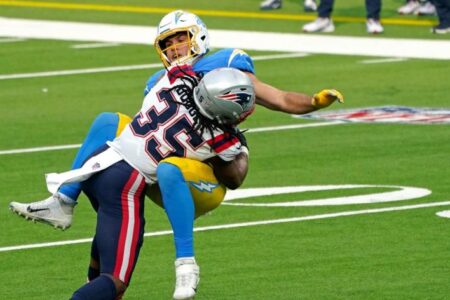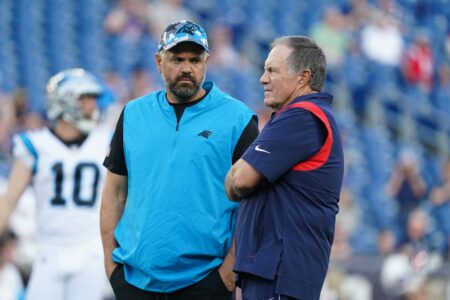Ring 6
PatsFans.com Supporter
PatsFans.com Supporter
2021 Weekly Picks Winner
2022 Weekly Picks Winner
- Joined
- Sep 13, 2004
- Messages
- 63,761
- Reaction score
- 14,113
How is the rookie pool affected by the new CBA?
I havent read anything about this.
Since the cap went up dramatically,did the rookie pool also go up?
IIRC, we have normally seen no more than a 10% increase in rookie pools (slot to slot that is) each year. Since the cap went up so dramatically, did the rookie pool follow it?
I know there are also new rules that limit the length of rookie deals. I would assume when requesting that the union would have wanted a corresponding separate bump to the rookie pool, because a shorter contract with the same first year cap number would mean less overall $$ to the player. (Unless of course the increase for subsequent years are higher.....the shorter time to amortize a signing bonus at the same cap hit means a smaller signing bonus)
It seems that the answers to these questions could mean a tremendous increase in the cost of rookies. That would balance out some of what is being perceived as boatloads of cap room out there.
In past years, with the rule of 51 a rookie class would only take up something like 2mill in total cap room. That is partly because everyone after round2 had almost a zero,or a zero cap cost due to the rule of 51.
I could conceive of increases in the rookie pool of 25-30% doubling or tripling the cap hits of signing a rookie class because of that.
I also havent even seen reported whether the rookie pool is still part of the CBA under the new deal.
I guess to boil down this rambling post to one question: How was the rookie pool affected by the new CBA?
Also, Miguel, I know you always do this once the draft is over, but based on the previous question do you have a ballpark idea of what the rookie class would project to costing us, if we kept all of the picks?
I havent read anything about this.
Since the cap went up dramatically,did the rookie pool also go up?
IIRC, we have normally seen no more than a 10% increase in rookie pools (slot to slot that is) each year. Since the cap went up so dramatically, did the rookie pool follow it?
I know there are also new rules that limit the length of rookie deals. I would assume when requesting that the union would have wanted a corresponding separate bump to the rookie pool, because a shorter contract with the same first year cap number would mean less overall $$ to the player. (Unless of course the increase for subsequent years are higher.....the shorter time to amortize a signing bonus at the same cap hit means a smaller signing bonus)
It seems that the answers to these questions could mean a tremendous increase in the cost of rookies. That would balance out some of what is being perceived as boatloads of cap room out there.
In past years, with the rule of 51 a rookie class would only take up something like 2mill in total cap room. That is partly because everyone after round2 had almost a zero,or a zero cap cost due to the rule of 51.
I could conceive of increases in the rookie pool of 25-30% doubling or tripling the cap hits of signing a rookie class because of that.
I also havent even seen reported whether the rookie pool is still part of the CBA under the new deal.
I guess to boil down this rambling post to one question: How was the rookie pool affected by the new CBA?
Also, Miguel, I know you always do this once the draft is over, but based on the previous question do you have a ballpark idea of what the rookie class would project to costing us, if we kept all of the picks?


















